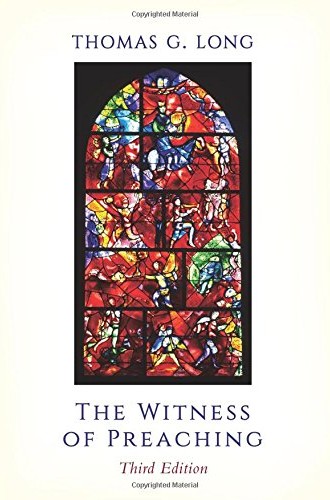The Witness of Preaching after three decades
To teach preaching, I need the witness of Tom Long—and others, too.
It’s hard to imagine a book over the past three decades that has shaped the preaching of mainline Protestant clergy more than Thomas Long’s The Witness of Preaching. First published in 1989 and now in its third edition, it has sold 66,000 copies. I’ve owned several of those copies, first as a divinity school student, then as a graduate teaching assistant, and now as a seminary professor who requires the book for my classes.
I remember the first assignment in my introductory homiletics course as a seminary student. With the first edition of The Witness of Preaching as our textbook, we were asked to write several potential focus and function statements for a biblical pericope. According to Long, having clear, succinct statements naming what the sermon hopes to say—the focus—and what the sermon intends to do—the function—governs the preparation of the sermon. Only after clarifying these two tasks can the preacher shape a sermon and choose illustrative material. An integrated relationship between focus and function helps each sermon to have one (and only one) central message.
Long’s emphasis on a sermon’s having one central message comes from two places: the shifts in the field of homiletics at the time of the book’s writing and Long’s own guiding image of the preacher. He wrote The Witness of Preaching in the wake of the narrative turn in homiletics. In the late 1970s and 1980s, many homileticians began advocating for sermons that move with narrative suspense rather than deduce logical points. These narrative options included Fred Craddock’s inductive approach, Eugene Lowry’s idea of a homiletical plot, and David Buttrick’s argument for the sermon as a series of moves. These approaches shared the conviction that a narrative sermon should progress toward a single destination.






